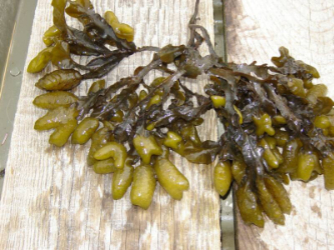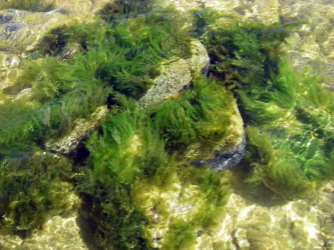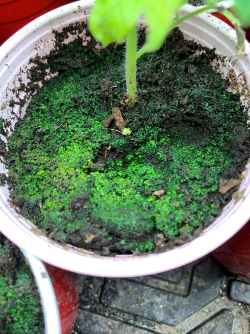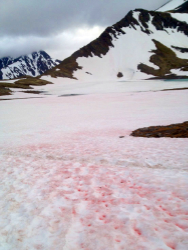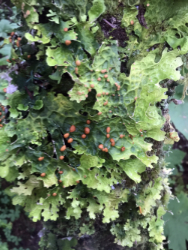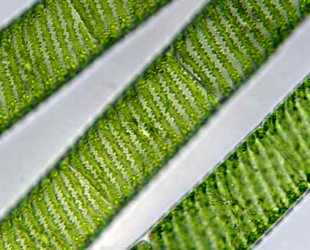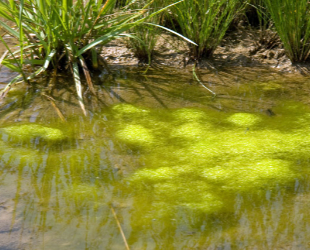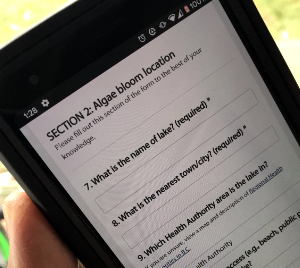What are algae?
Algae are a very diverse group of simple plants that can be found in freshwater and marine environments throughout British Columbia.
While they are often considered to be aquatic organisms, algae are found in a wide range of habitats, including:
- In the soil
- Growing on rocks and on snow
- Growing in association with plants, fungi (as lichens) and with animals (such as corals).
Examples of algae viewed under a microscope
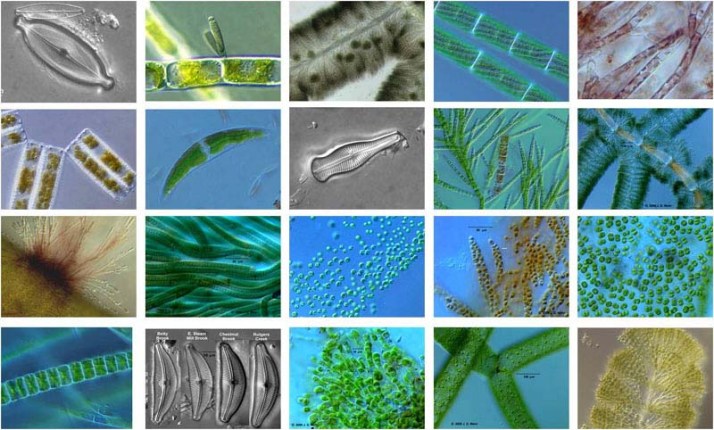
Examples of algae in the environment
They provide important ecosystem functions, including supporting fisheries as the base of the aquatic food chain and supplying much of the oxygen we breathe. Algae can range in size from microscopic single cells (microalgae) to large seaweeds (macroalgae). While most species are microscopic, several can form colonies or long filaments and accumulate together where they can become visible to the naked eye.
Did you know? Algae + Fungi = Lichen
This is Lobaria linita from the Kitimat area. Lobaria linita is one of the “lung lichens”, so called because they resemble lung tissue in appearance.
In Europe, cough remedies are made from lichen extract taken from this genus.
Lobaria linita is a tripartite lichen with fungal, green algal and cyanobacterial components.
Most algae contain the green pigment chlorophyll-a, is which used for capturing light energy through photosynthesis.
Some unique species have no pigment at all, some have accessory pigments for light capture, and others can even engulf and digest other algae and bacteria.
...previous topic |
next topic... |
Image references
(1) Source: https://www-cyanosite.bio.purdue.edu/
(2) Source: http://bioweb.uwlax.edu/bio203/2010/fenske_megh
(3) Source: International Network for Natural Sciences. https://innspubnet.wordpress.com/2015/06/17/local-screening-for-algal-diversity-in-relation-to-water-quality-of-district-swabi-future-prospects/
All other photos are from Ministry of Environment and Climate Change Strategy staff files.
In this section
Use our online Algae Watch Observation submission form to send us your algae bloom photos and description.
If you have concerns that are immediate and related to drinking and/or recreational water use, please contact your local health authority.
To report a spill or other contamination source, contact the Provincial Emergency Program spill reporting line at 1-800-663-3456.
To report an act of pollution, contact the RAPP (Report All Poachers and Polluters) Line at 1-877-952-RAPP (7277), or report a violation online.

